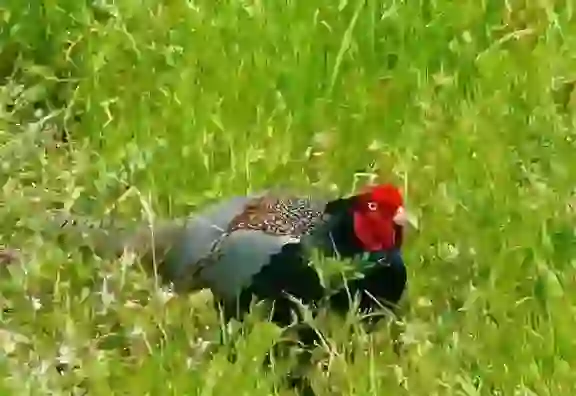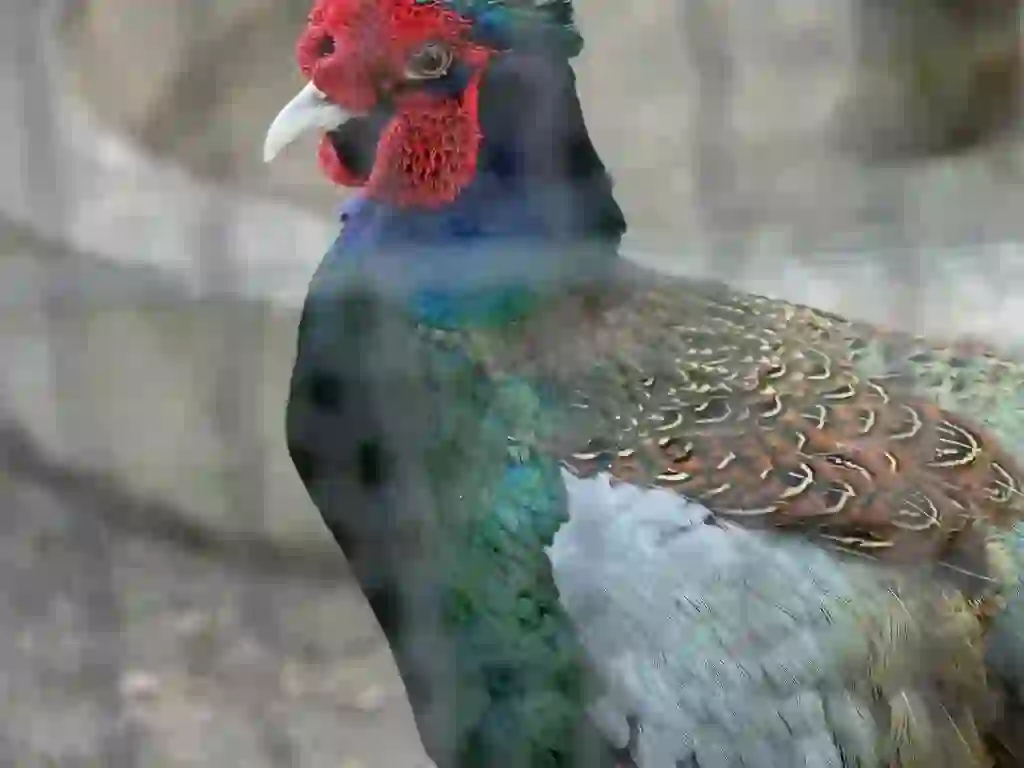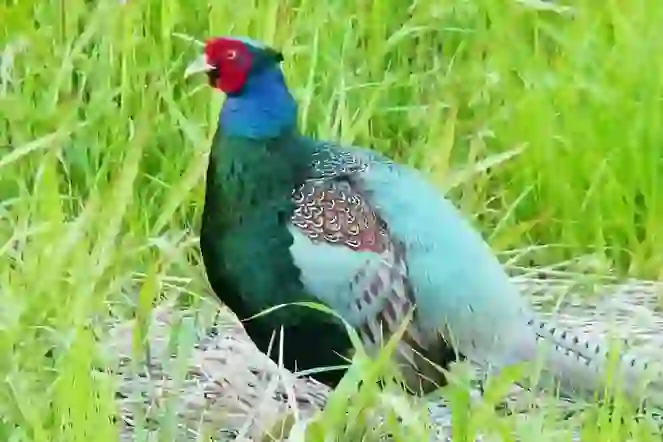
Pheasant
Pheasant
Pheasant
Suddenly, do you know the national bird of Japan? Surprisingly, it is not known that the national bird of Japan is not a crane or ibis, but actually a "pheasant" that appears in the Japan fairy tale "Momotaro". Pheasants are wild birds characterized by their bright colors, and they are relatively familiar to us Japan, having appeared in various stories since ancient times. What characteristics and secrets such pheasants have, let's take a peek at their lives together in this article!
Pheasant Basic Infomation
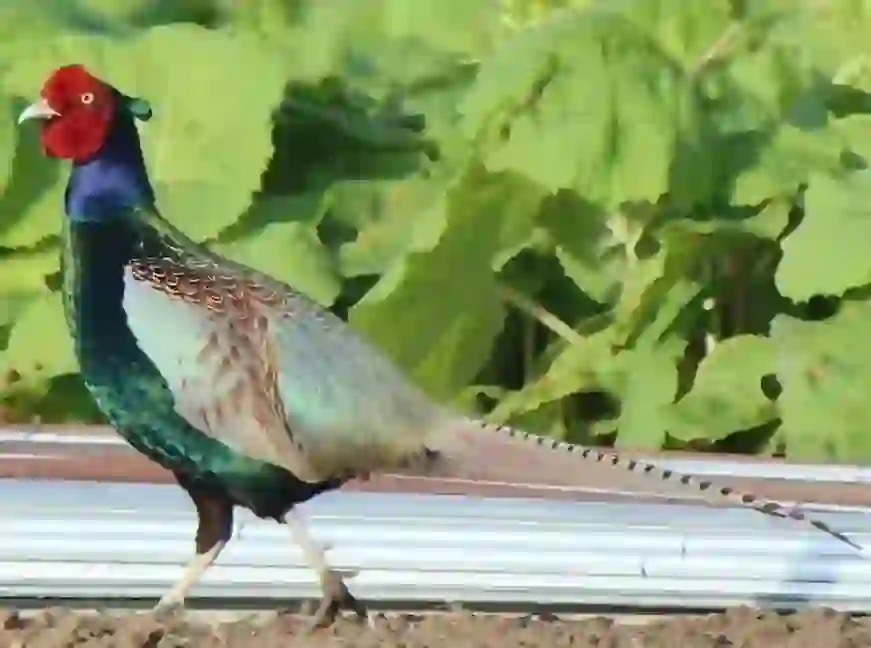
Aves-Galliformes-Phasianidae.
Male:length 80cm weight 847~1387g. Female:length 60cm weight 692~970g.
Pheasant is a species of wild bird of the pheasant family that lives in a wide area of Japan (Honshu ~ Kyushu). In the past, the pheasant that inhabited the Japan was thought to be a subspecies of the "common pheasant" that lives on the Eurasian continent, but now it is considered to be an endemic species that evolved independently in Japan. Against this background, this article refers to pheasants that live in Japan as "Japanese pheasants".
Japanese pheasants are known to have completely different colors between males and females. The male has a red wattle around the eyes and a very noticeable color scheme of blue-purple on the head and neck and green on the body. On the other hand, the female has an unnoticeable brown color all over her body and looks very similar to the female of another bird in the same family called “copper pheasant.”
Japanese pheasants are birds with polygynous mating systems. During the breeding season, multiple females settle in the male’s territory and mate. The breeding season varies depending on the area where they live. Only the female takes care of the chicks, and the male does not directly participate in child-rearing.
However, it is believed that the male indirectly protects the chicks by driving away predators from a location away from the nest. The female lays 6-12 eggs during the egg-laying period, and they hatch in about 23-25 days. The chicks grow to be about as big as their parents after 7-8 months and leave the nest.
Outside of the breeding season, males form small groups with other males, and females form small groups with other females.
Pheasant Q&A

Where does the name pheasant come from?
The English name is pheasant, but in fact, in the case of the Japanese name, it is named "kiji". Why did it come to be called kiji by its Japanese name this time? We will introduce its origin.
It is said that pheasants were called "kigishi" in the Heian period because of their sounds. After that, it was also called "kigisu", but it is believed that the kigishi and kigisu became shorter and shorter, and before you know it, they came to be called "kiji".
The scientific name is expressed as "phasianus versicolor". In kanji, it is expressed as "雉 (kiji)", which means "a bird that flies straight like an arrow".
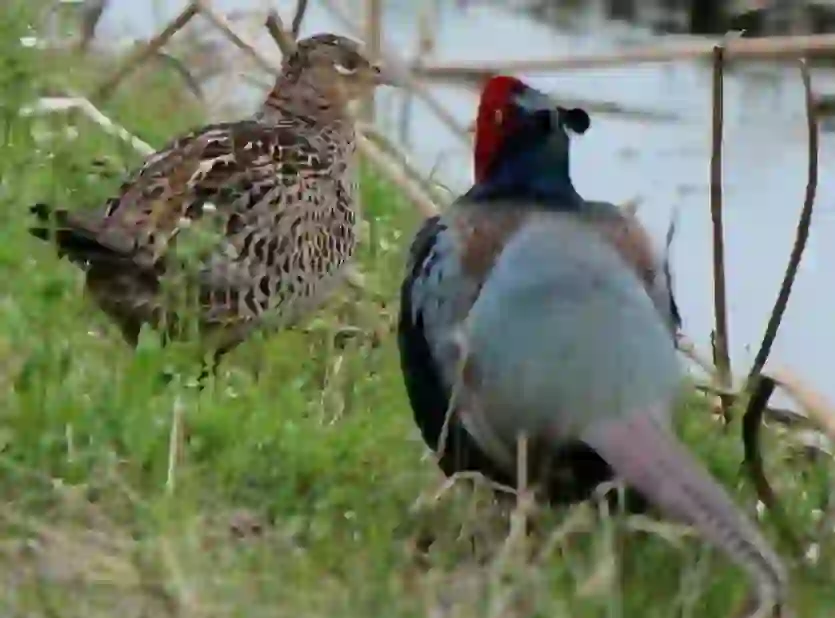
Why do pheasants live there?
Japanese pheasants inhabit bright forests, grasslands, and agricultural lands from flatlands to mountains from Honshu to Kyushu.
In fact, it is believed that Japanese pheasants are divided into four subspecies depending on their habitat. Those that inhabit the northern Japan are named "pheasants", those that inhabit Honshu and Shikoku west of the east Japan are called "Toukai pheasants", those that inhabit Miura, Izu, Kii Peninsula, Yakushima, and Tanegashima are named "Shima pheasants", and those that inhabit Kyushu and parts of Chugoku and Shikoku are named "Kyuushu pheasants".
As of 2023, it is unknown why Japanese pheasants live in Japan. However, seeing that the "Kourai pheasant", which is a bird that lives on the Eurasian continent and is brought to Japan by humans and is close enough to cross with Japanese pheasants (can breed between different types of animals), is breeding in Hokkaido, Okinawa Prefecture, Tsushima, etc., it is thought that the warm Japan abundant in plants and insects is a comfortable environment for pheasants to live in and raise their young.
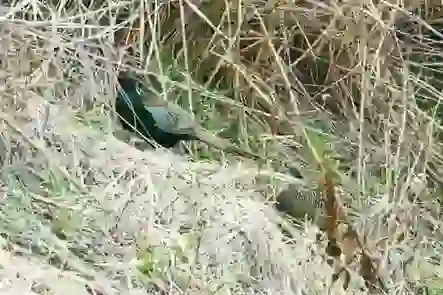
What do pheasants eat?
Pheasants are omnivorous animals that eat plant-based foods such as leaves, flowers, fruits, seeds, roots, etc., as well as animal-based foods such as insects like grasshoppers and crickets, slugs, snails, etc.
In zoos, they are mainly fed chicken feed and given vegetables such as greens.
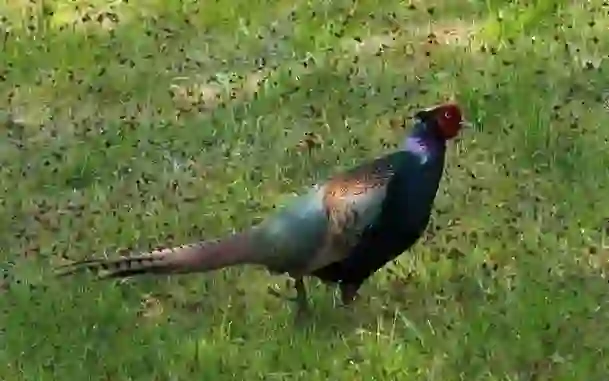
Why did the pheasant become the national bird of Japan?
In 1947, the Ministry of Culture requested that the Ornithological Society of Japan select a bird suitable as a national bird. As a result of discussions among 22 ornithologists, the pheasant was chosen as the national bird because it can be seen throughout the year from Honshu to Kyushu, is frequently seen, has beautiful feathers and a brave personality in males, has strong maternal love in females, and has been popularized in stories such as Momotaro.
However, despite being Japan’s national bird, the pheasant is also designated as a game bird. Therefore, despite being a representative bird of Japan, it is in a strange position of being hunted during hunting season.
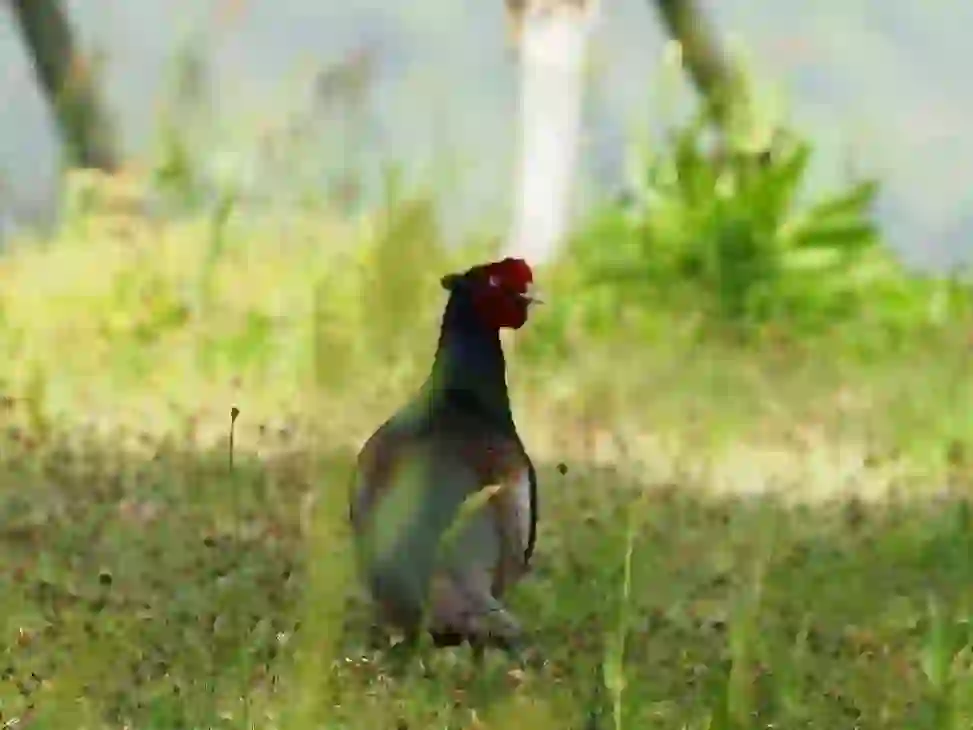
What kind of character does a pheasant have?
It is said that pheasants are naturally alert and timid.
However, during the breeding season, males become very brave and ferocious, and stand up to rival males and natural enemies, snakes. Males at this time of year seem to have the property of reacting to red, and sometimes jump on humans and attack them.
Females, on the other hand, have a strong maternal love and do not leave the nest even if the chicks and eggs are in danger. In Japan, there is a proverb called "yakeno-no-kigisu-yorunotsuru", which expresses the female nature of pheasants to protect their chicks by covering them with their wings, without regard for their own lives even if the field is burned.
Therefore, I still sometimes didn't notice that there was a pheasant nest, and when I was mowing weeds with a mower, I hurt the female pheasant who was trying to protect the eggs and chicks … This case has been reported.
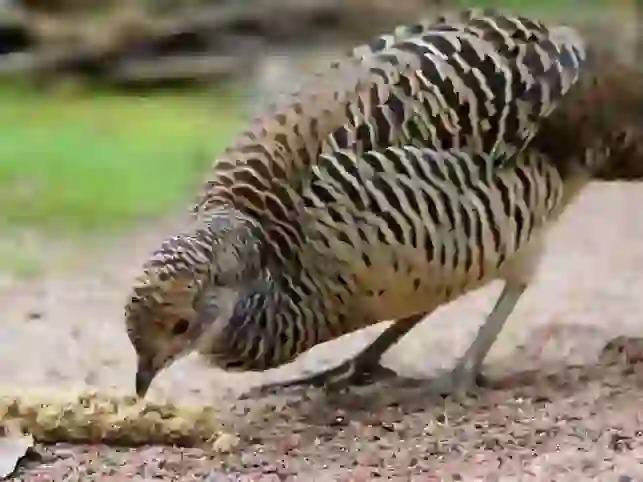
What kind of croaking is a pheasant?
The most famous call of pheasants is the call "Kane Kane" and "Kenken" of males who have reached the breeding season.After the male chirps like this, he shakes his wings violently and makes a "babababa" "dodododo" This behavior is called “horouchi” in Japanese.This behavior is thought to have the meaning of appealing to females by making their bodies look larger and stronger, and insisting that other males do not take their territory.
On the other hand, female pheasants chirp with cute voices such as "pyu pyu" and "cue cue".
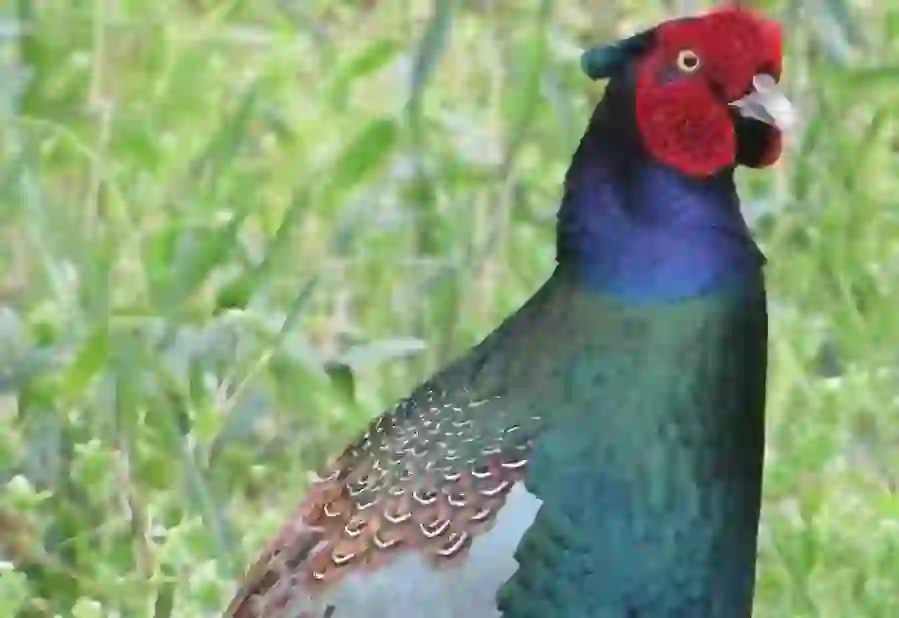
Is it true that pheasants are not good at flying?
It's true.
Pheasants are members of the bird family, but in fact they are not good at flying. Unable to fly long distances, they do not live on trees or in the sky, like other birds, and spend most of their lives on the ground.
Pheasants are not good at flying, but they are good at running, and it is said that they can run at a speed of up to 30 km / h when they get serious.
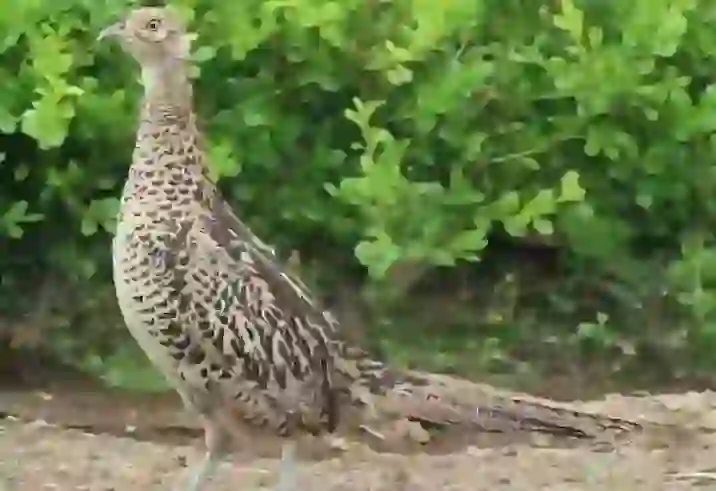
Why do pheasants have different colors between males and females?
Males of pheasants have very flashy shades, while females have such a sober shade that it is hard to believe that they are the same bird. So why are male and female pheasants so different in color?
Some animals, such as lions and beetles, have a property called "sexual dimorphism" that varies in appearance and size depending on gender. Pheasants are also one of the species of animals where this sexual dimorphism can be seen, and it is thought that males have a bright color to be popular with females, and females have a sober color that is difficult to find by natural enemies and is advantageous for raising children.
It seems that pheasant females judge that the larger the bulge of the drooping of the male's face, the stronger the male. Therefore, during the breeding season, males make their faces large and bright red, spread their tail feathers and leave their wings ajar, desperately trying to attract the attention of females and perform courtship displays.
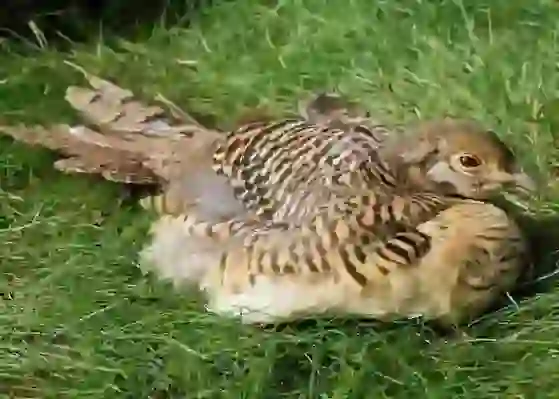
Can pheasants be kept as pets?
When breeding unusual animals at home, it is necessary to follow the established laws in some countries. This time, we will introduce whether it is possible to keep pheasants at home in Japan.
Pheasants living in Japan are "hunting birds and beasts" that are allowed to be captured, so if you have a hunting license, you can catch them freely if you follow the specified period and place. However, this is only allowed to hunt, not to be kept as a pet.
If you want to capture and raise pheasants in the wild, you need to register them in the municipality where you live. It is considered very unlikely that you will be granted a permit, but if you really want to keep a pheasant in the wild, contact your municipality.
Basically, pheasants of wild birds cannot be raised, but in fact, it is possible to raise pheasants as pets. This is because there are not many companies, but there are companies that keep and breed pheasants and sell them for the purpose of pets and release.
Therefore, if you want to keep pheasants as pets, it is a good idea to find and contact companies that provide captive breeding of pheasants. Pheasants are said to be less difficult to raise because they can be raised on the same food as chickens and the space required for rearing them is not large.
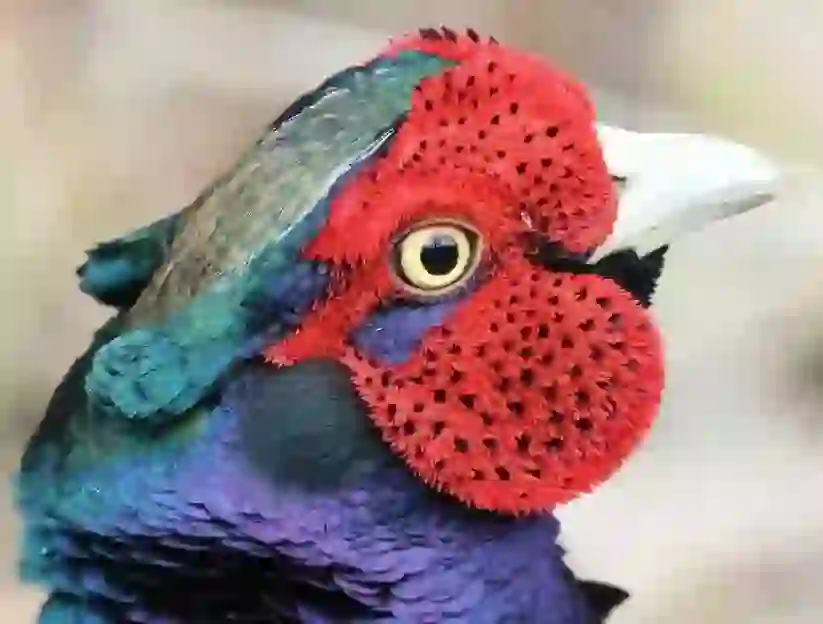
Are there places where pheasants can be seen in Japan?
Japanese pheasants are kept in zoos all over Japan, such as Ueno Zoo and Inokashira Park Zoo in Tokyo and Kyoto City Zoo in Kyoto.
By the way, there is a type of pheasant called “himalayan monal,” which has beautiful rainbow-colored feathers all over its body. It is kept at the Yokohama Zoo Zoorasia in Kanagawa Prefecture and the Kobe Oji Zoo in Hyogo Prefecture. Both Japanese pheasants and himalayan monal are kept at Tama Zoological Park in Tokyo, so if you want to compare them, it might be a good idea to visit there.
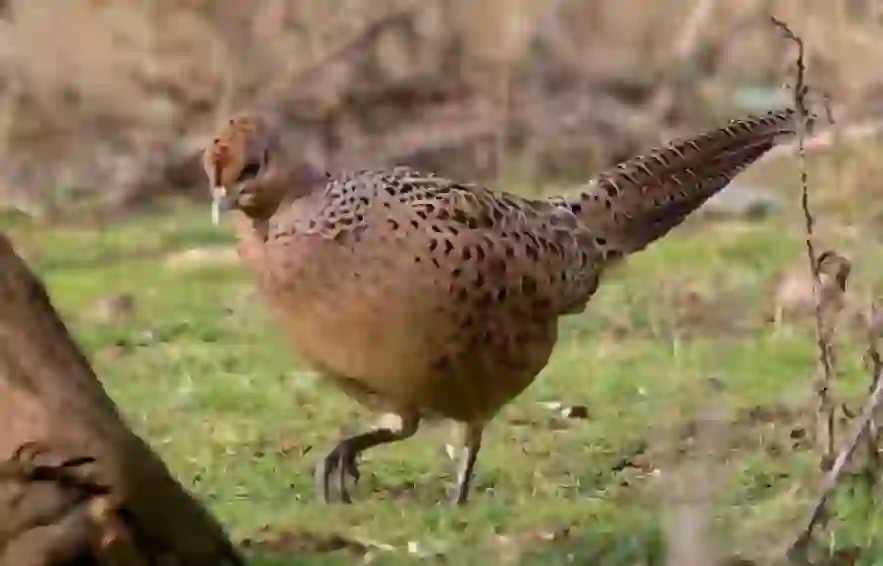
What is the lifespan of a pheasant?
The lifespan of Japanese pheasants is said to be about 10 years in captivity. However, since wild pheasants have many natural enemies, many individuals may not live for 10 years.
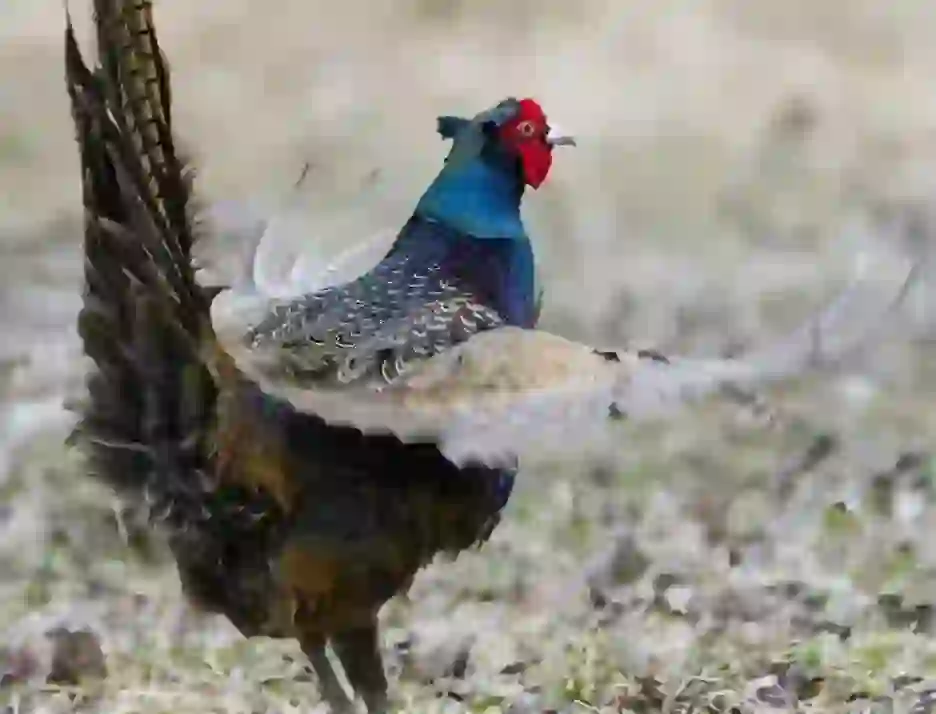
What enemies does pheasant have?
Japanese pheasants have many natural enemies and can be eaten by raccoon dogs, foxes, mammals such as japanese martens and civets, birds of prey such as eagles and hawks, and snakes.
However, for Japanese pheasants, it may be said that the biggest enemy is us humans. Japanese pheasants have been the object of hunting since ancient times due to their beautiful appearance and delicious meat. However, at present, the number of Japanese pheasants that one hunter can catch is limited to two per day, and females are basically not allowed to be caught, so it seems unlikely that hunting pressure has drastically reduced the number of Japanese pheasants.
In fact, in order to maintain the population of Japanese pheasants, which are the target of hunting, artificially bred individuals have been released all over the country since ancient times.
Among them, there are areas where the alien species common pheasant was released and crossed with the native Japanese pheasant, and the characteristics of the native Japanese pheasant disappeared. Bird release continues to this day, but the subspecies of Japanese pheasant that can be released are determined for each region.
I did not find detailed information on the number of Japanese pheasants, but they are designated as "endangered species" in some areas because their population is declining in some parts of Tokyo.

Would you like to become a part of the 'Animalbook.jp'?
Turn your knowledge into Q&A and share it with the world. ※Publication will be activated after purchase. Let's share information together!
Pheasant Type of List
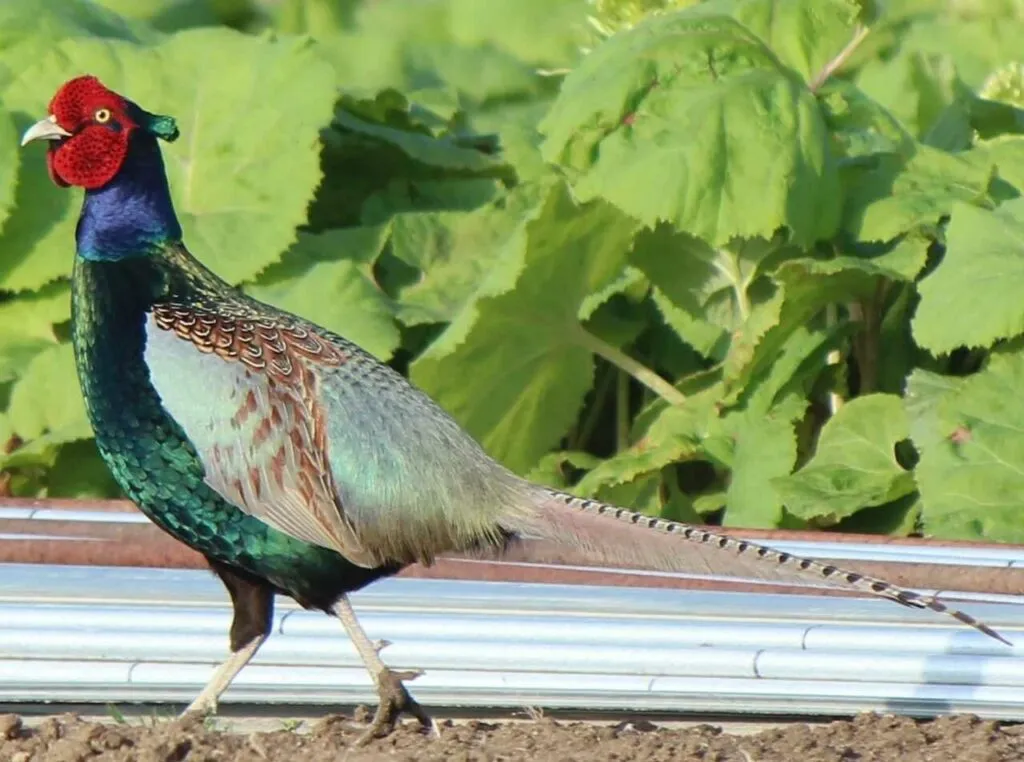
- Pheasant
Information
Congratulations! You are the first commenter!

Create Your Favorite List!
Pheasant
Save the animals you love! Build your own list to quickly revisit your favorites later.

Would you like to leave a comment?
※Please note: This is for the purchase of rights to post comments within the article.
Find Your Favorites!
Our shop offers a unique and attractive selection of goods themed around various animals.
Pheasant References

- 語源由来辞典「キジ/雉/雉子/きじ」 https://gogen-yurai.jp/kiji/
- 認定NPO法人バードリサーチ「バードリサーチニュース 生態図鑑 キジ」 https://db3.bird-research.jp/news/201701-no2/
- 日本野鳥の会京都支部「キジ」 https://wbsj-kyoto.net/yachoulist/キジ/
- サントリーの愛鳥活動「日本の鳥百科 キジ」 https://www.suntory.co.jp/eco/birds/encyclopedia/detail/1345.html
- コトバンク「焼け野の雉夜の鶴」 https://kotobank.jp/word/焼け野の雉夜の鶴-648109
- 京都市動物園「どうぶつ図鑑 ニホンキジ」 https://www5.city.kyoto.jp/zoo/animals/birds/p_colchicus
- 千葉県「野鳥は捕まえたり飼ったりできません。」 https://www.pref.chiba.lg.jp/shizen/choujuu/yachou.html
- 日本キジ・ヤマドリ繁殖センター「商品紹介」 https://www.torihiko.jp/original.html
- NHK for School「色あざやかなキジ」 https://www2.nhk.or.jp/school/movie/clip.cgi?das_id=D0005400635_00000
- 新潟県立自然科学館「『科学館日記』 新潟県立自然科学館 -スタッフコラム-」 http://sciencemuseum.jp/cp-bin/wordpress/2019/05/03/実は載っていました!/
Pheasant Introduction of media used
出典:https://pixabay.com/videos/id-8418/

出典:https://pixabay.com/images/id-2861972/

出典:https://pixabay.com/images/id-1765623/

出典:https://pixabay.com/images/id-4814179/

出典:https://pixabay.com/images/id-2227116/
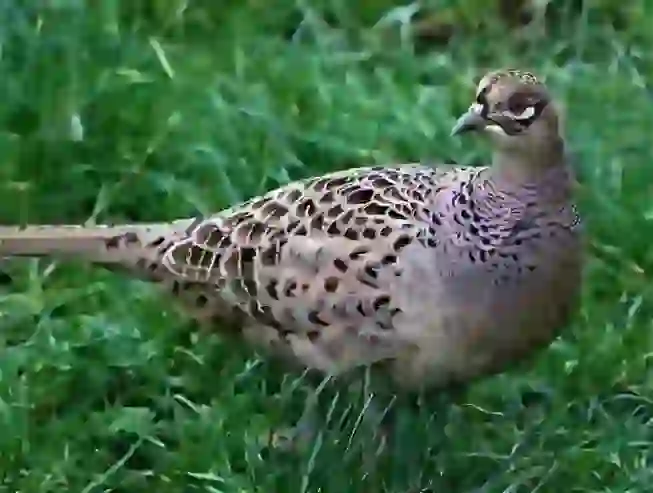
出典:https://pixabay.com/images/id-4758575/
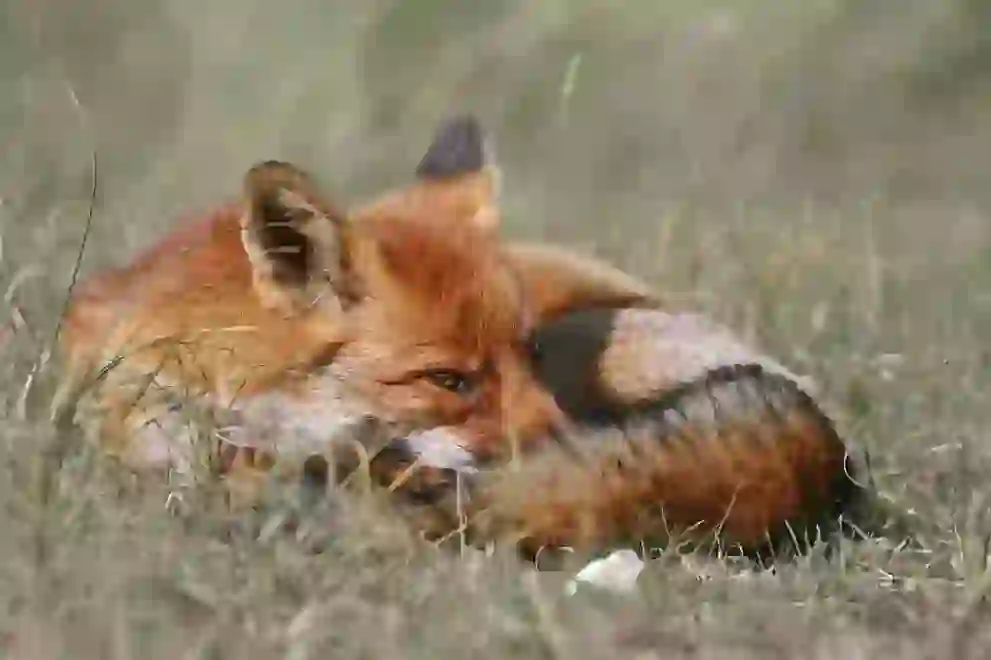
enemy
出典:https://pixabay.com/images/id-4595670/
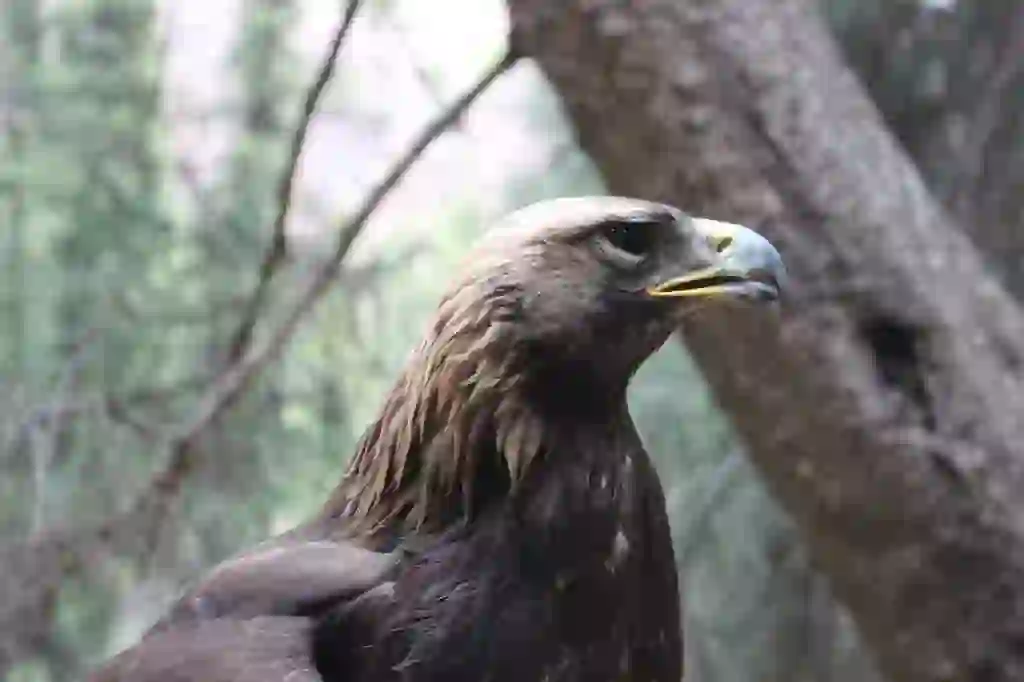
enemy
出典:https://pixabay.com/images/id-4266693/

Help Enrich Our Animalbook.jp with Your Media!
We are constantly looking to expand and enrich our Animalbook.jp with amazing photos and videos of animals. If you have any media that you'd like to share, please contribute and help us showcase the beauty and diversity of the animal kingdom. Your submissions will be credited and featured in our encyclopedia, reaching a wide audience of animal lovers.
















